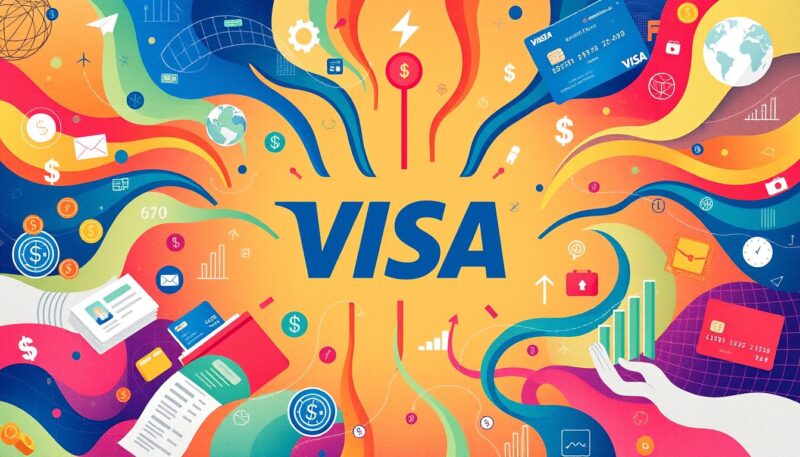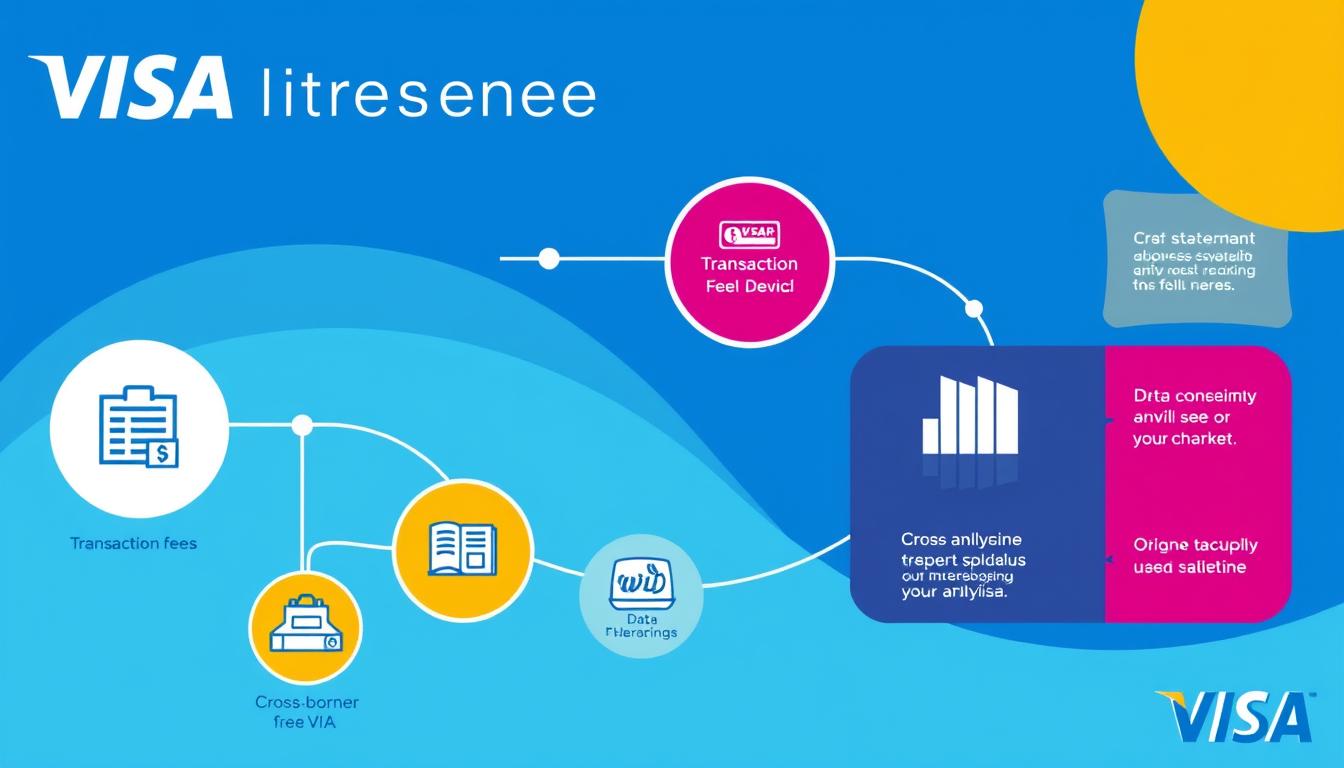Visa Inc. is widely recognized as a pillar of the global digital payments system, operating in over 200 countries and territories. While many think of Visa solely as a credit card company, it actually plays a more intricate role within the payments ecosystem. In fiscal year 2023, Visa amassed impressive revenues of $32.7 billion, representing an 11% increase compared to the previous year. This growth is fueled by its robust Visa revenue model, which facilitates approximately 283.2 billion transactions valued at $15.1 trillion.
Understanding how Visa makes money requires delving into its various income streams and how it effectively serves both consumers and merchants. Unlike banks, Visa does not issue cards or lend money directly; instead, it acts as an intermediary, offering services such as transaction authorization, clearing, and settlement. With about 4.5 billion payment cards circulating globally, Visa’s strong network is powered by partnerships with 14,500 financial institutions and 130 million merchants, allowing it to tap into diverse markets while continually driving Visa’s financial success.
Understanding Visa’s Business Model
Visa operates as a key player in the electronic payment ecosystem, providing a unique Visa business model that supports global commerce. With a brand value of approximately US$191.03 billion, Visa has established itself as a prominent global digital payments brand. You can see how Visa and global payments work intricately together to power a vast array of transactions worldwide.
Global Digital Payments Brand
Recognized for its innovative solutions, Visa exemplifies a global digital payments brand catering to various customer segments including financial institutions, merchants, consumers, and government entities. The company’s reach extends to 4.3 billion users as of 2023, demonstrating its expansive influence in the payments industry.
Role as an Intermediary in Transactions
In its role as an intermediary in transactions, Visa facilitates the seamless exchange of information and funds between consumers and financial institutions. Visa charges fees to financial institutions, merchants, and consumers for utilizing its network, significantly contributing to how Visa makes money. Its infrastructure supports approximately 65,000 transactions per second, vastly outpacing competitors like Mastercard.
Primary Services Offered
Visa’s primary services include authorization, clearing, and settlement, which are essential for processing electronic payments. The company generates revenue through multiple channels, including service fees, data processing fees, and international transaction fees. This comprehensive service offering solidifies Visa’s position at the forefront of the digital payment landscape.
How Does Visa Make Money?
Visa employs a multi-faceted approach to generate revenue through various channels. By understanding these key sources, you can appreciate how Visa remains a dominant player in the payment processing landscape.
Data Processing Revenue Streams
The primary Visa profit sources involve data processing revenues, which are substantial. Fees associated with transaction authorization, clearing, and settlement form the backbone of this revenue stream. With every transaction processed, Visa collects a data processing fee, which expands as transaction volumes increase. This scalability highlights Visa’s efficient operations, showcasing its prowess in facilitating payments for credit card companies revenue.
International Transaction Processing
Global commerce has led to a rise in international transaction processing revenues. Visa generates fees from cross-border transactions, which encompass currency conversion charges. This segment has become increasingly important due to the proliferation of e-commerce worldwide. Moreover, as consumers make purchases across borders, Visa captures a larger share of the growing demand for secure and efficient payment solutions.
Service Revenues
Service revenues represent another essential component of Visa’s financial strategy. These encompass various fees for services like account management, consulting, and analytics, which are offered to financial institutions and merchants. By providing valuable insights and support, Visa fosters loyalty among its clients. This not only ensures repeated business but also enhances overall service utilization across different customer segments.

| Revenue Source | Description | Significance |
|---|---|---|
| Data Processing | Fees from transaction authorization, clearing, and settlement | Primary source of income; scales with transaction volume |
| International Transaction Processing | Fees from cross-border transactions and currency conversions | Increased relevance due to global e-commerce growth |
| Service Revenues | Fees for account management, consulting, and analytics | Enhances client loyalty and service utilization |
This combination of revenue streams reflects Visa’s versatile business model and its adaptive approach in a dynamic marketplace. As the landscape of payments continues to evolve, Visa remains strategically positioned to capitalize on emerging trends and market opportunities.
Visa’s Financial Success and Strategies
Visa’s financial success stems from a well-crafted strategy focusing on diverse revenue distribution and long-term client relationships. By analyzing its revenue streams, it becomes apparent how Visa maintains a competitive edge in the digital payments industry.
Analysis of Revenue Distribution
In fiscal year 2023, Visa achieved net revenues of $24.1 billion, demonstrating the effectiveness of Visa’s financial strategy in optimizing income sources. The breakdown of major revenue streams is as follows:
| Revenue Stream | Amount (in Billion $) |
|---|---|
| Data Processing Revenues | 16.0 |
| Service Revenues | 14.8 |
| International Transaction Processing | 11.6 |
| Other Revenues | Not Disclosed |
Visa captures value through service revenues from banks and financial institutions participating in its card programs. Additionally, by providing data processing services for authorization, clearing, and settlement, Visa generates substantial income that contributes to its overall revenue profile.
Investment in New Technologies
Visa continuously invests in new technologies to maintain its leadership position in the financial landscape. In 2023, Visa’s total investments amounted to $772 million, including its acquisition of fintech startup Plaid for $5.3 billion. The introduction of the Visa Token Service marked a significant milestone, achieving a combined e-commerce payments volume of $1 trillion across its network. Initiatives like launching a small business hub and enabling payments on platforms such as WhatsApp in Brazil highlight Visa’s commitment to technological advancements and support innovation within the payment ecosystem.
Long-Term Client Incentives
To secure lasting relationships with clients, Visa employs incentives such as loyalty programs and strategic partnerships. These initiatives enhance customer retention while boosting transaction volumes. By sponsoring major sporting events, like the FIFA World Cup and the Olympics, Visa strengthens its brand presence and attracts new consumers. The flexibility that allows each financial institution to set their own fees and interest rates on credit cards supports various market segments, aligning with Visa income streams tailored to diverse customer needs.

Conclusion
Understanding how Visa makes money reveals the complexities of its innovative business model and financial strategies. With an impressive projected revenue of approximately US$35.93 billion in 2024 and a robust operating income of US$23.60 billion, Visa exemplifies success in the payment card services industry. By leveraging various revenue streams such as data processing fees, international transaction fees, and service revenues, you can see how Visa effectively capitalizes on its leading market position, commanding around 50% of global card payments outside China.
Moreover, Visa’s financial success is not merely a result of transaction volume; it also stems from strategic investments in technology and partnerships that enhance user experience. As consumer preferences shift towards digital wallets and contactless payments, Visa remains at the forefront, evolving its offerings to meet the growing demand of businesses and consumers alike. The company’s focus on security, convenience, and innovation underscores its commitment to maintaining its trusted brand value of over US$191 billion.
In essence, Visa’s business model integrates its extensive payment processing network with cutting-edge technological advancements, positioning the company for future growth. With an eye on the evolving landscape of electronic transactions, Visa is poised to not only sustain its profitability but also thrive in an increasingly competitive financial environment. Embracing new opportunities and adapting to market trends will ensure that Visa continues to play a pivotal role in the world of digital payments.

